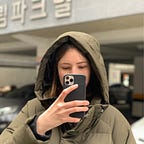Xenosomatics: A Larp for a lark.
<<< Previous project found here: Reading: Making sense of the mess.
This week we had a guest lecturer, Susan Ploetz, come to talk to us about Nordic Larp and how this relates to UX Design.
We began by reading about Somatics, a concept that we learnt would be very relevant to the following activities.
Somatics, as I understand, is a field of study that “emphasises internal physical perception and experience” (Hanna), and states that the knowledge you acquire by existing is immediately factual to you; your experience is your truth.
Monday.
Susan began the session by introducing herself and explaining about Nordic Larp:
“It is a form of creative storytelling that encourages players to step into other people’s shoes”.
She showed us a very useful video which I will link here because I want to remember it myself.
This video made a few things clear to me. First, that the brain is bad at distinguishing between reality and fiction — you’re bringing in sensory information either way. Johanna Koljonen, in her talk “Introduction to Nordic Larp”, adds to this stating “fictional stories experienced on our bodies are also real”. This links to Somatics as what we experience is our own personal truth. This makes Larp a very real way to explore and play-test new ideas and experiences.
“Larp is a very conscious framing of an alternative reality in the mind” (Susan Ploetz)
As Larp is a very immersive form of collaborative storytelling, it relies on people’s input so that players can have an insightful experience. Nordic Larp prioritises people’s comfort to create a safe space for participants, as without this players may feel uncomfortable and thus will not be able to contribute or feel immersed in the story.
It very much relies on co-design and co-creation (Sanders & Stappers). The big “interaction machine” of Nordic Larp takes character and world creation as an input and outputs as a unique new story that each participant tells. It facilitates world building, trying out speculative realities, with co-authorship with a focus on internal experience. Consent is continually negotiated.
Skinship 🖐 .
In the second half of the first session Susan showed us a Larp she designed called Skinship —but with alterations for Zoom. We were each asked to gather a pillow, leaf, stone, mug with water, and toilet paper, and wait for further instruction.
She moved us through a short meditation, asking us to close our eyes, image ourselves as a new alien being, and adopt a new name along with a new alien perspective.
We were guided through exploring each item through our alien mindset. She introduced a collaborative aspect to the exercise where we switched on our microphones and said aloud a word we associate with the object. We were encouraged to repeat the word we heard someone say, echoing the person speaking. For example, I said the word “delicate” for the leaf, after which everyone repeated — simulating a collective hive mind.
Reflecting on the experience, my main struggle was staying in character. It was very easy for me to slip back into reality, although this is something I can imagine would get easier with time.
On the other hand, I found that I noticed a lot more about each “ordinary” object. Isolating each object and looking from a perspective that doesn’t already have established knowledge about things allowed me to pay attention to details. This in turn allowed me to discover new patterns and intake more information. Additionally, I loved the sense of togetherness that the word echoing created, and it made for a more immersive experience as I was aware other people were there with me.
To warm-up for our week’s project, Susan put us into groups to create characters and relationships between them in a new world: one where alien and human life is inextricably linked.
Next project on Xenosomatics in my next post: Xenosomatics: Alien time >>>
References.
- Nordic Larp Talks Stockholm 2010, 2011. Introduction to Nordic Larp — Johanna Koljonen. [video] Available at: <https://www.youtube.com/watch?v=fH_RLgR4DI4&feature=emb_logo> [Accessed 25 January 2021].
- Future of StoryTelling, 2016. Bjarke Pedersen — Becoming The Story (FoST 2016). [video] Available at: <https://www.youtube.com/watch?v=SuT88CnQ4xY> [Accessed 25 January 2021].
- Sanders, L. and Stappers, P.J., 2014. From designing to co-designing to collective dreaming: three slices in time. interactions, 21(6), pp.24–33.
